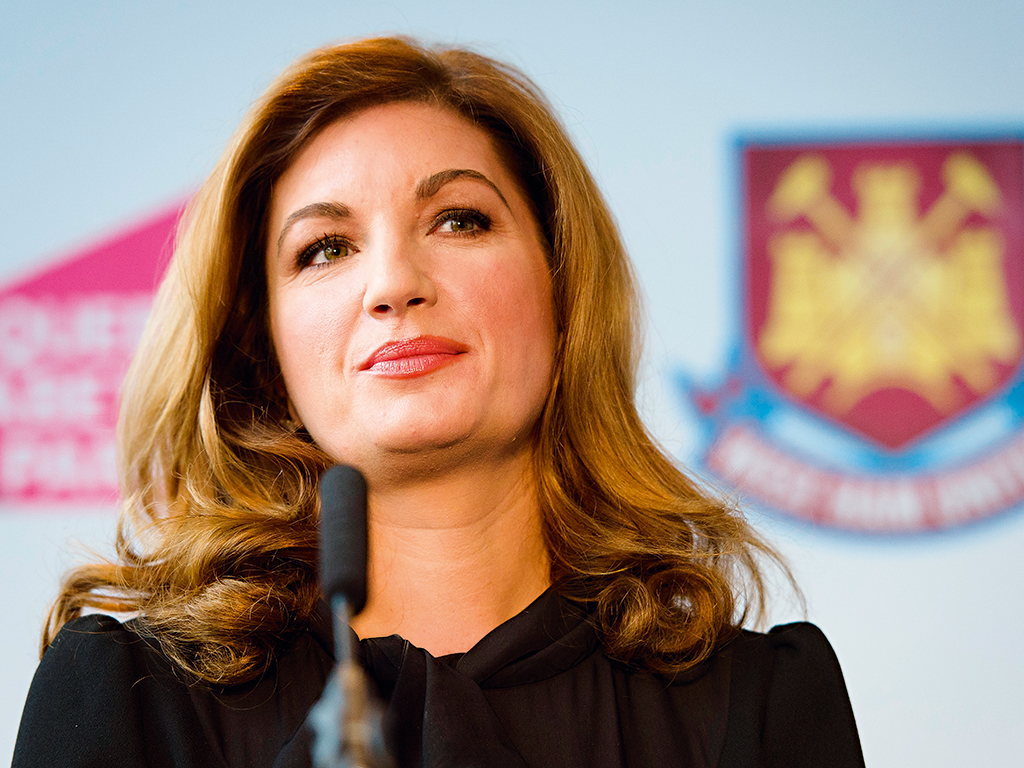Sports industry must promote women into more leadership roles
Statistics reveal that the fight for women to get into executive sports positions is as tough as ever

Karen Brady, Vice-Chair of West Ham United, is just one example of women in sport promoted to a leadership position
It is a truth universally acknowledged that former athletes make the best managers and sports executives. But when it comes to female executives that is certainly not the case. Despite female executives gaining ground and shattering the glass ceiling in almost every other industry, sport remains all but impenetrable to even the most talented and qualified leaders.
Though there has been a concerted effort by governing bodies in Europe to promote the advancement of women into positions of leadership, the sports industry as a whole remains structurally sexist. Research suggests women’s sport attracts only 0.5 percent of advertising revenue: in the US, WNBA players make 10 to 20 times less than their male counterparts.
With these challenges in mind, UEFA has launched the Women in Football Leadership Programme, which has as its aim the advancement of women in executive roles in sport. This move came off the back of Karen Espelund’s appointment as a full-member of the UEFA Executive Committee and Chair of the Women’s Football Committee. Yet, despite her success and UEFA’s positive initiative, the number of women in charge of men’s football clubs or administrative bodies remains negligible.
0.5%
of advertising revenue goes towards women’s sports
“Equality and integration are both essential to the development of the football workforce,” Espelund told UEFA. “Football has come a long way over the last few years, but there is still an evident lack of women in top-level positions. More needs to be done to change perspectives and increase opportunities.”
Outside UEFA, there have also been modicums of change. In the UK in particular, women have been rising to top positions within the industry. As CEO of UK Sport, Liz Nicholl oversees the development of the Olympic and Paralympic sports at a national level; the BBC’s Director of Sport is Barbara Slater. However, when it comes to the private sector, the number of women in charge is far lower. In fact, apart from Karren Brady, West Ham United’s Vice-Chair, and Margaret Byrne, CEO of Sunderland FC, there are few notable executives.
Not enough
“With football, the biggest challenge that you have in getting women into executive positions is that traditionally these roles were given to former footballers,” says sports commentator Liseli Sitali. “It is quite hard for people in that industry to get used to the idea that women could hold those posts – because of tradition. That is how they justify their discrimination.
“A lot of the people you find entrenched within football clubs are former players who are males, so they have been used to an all-male environment. They have never worked with a female manager before, all their trust and all their experience of the sport comes from working with males. When women come on board it is a bit of an anomaly, but they do phenomenally well.”
But the tides might be about to change, as, increasingly, women are assuming positions of power. “FIFA is setting a great example,” says Sitali, referring to the recent appointment of Lydia Nsekera as the first ever female member of the Executive Committee. “If they start to give women more influential positions where they are overseeing tournaments, it will show that women are just as, or even more, capable because they are not as entrenched in tradition, of running these sports successfully.”
Despite Nsekera’s appointment coming only after FIFA included a provision in its 2013 Statutes that a woman must be included in the Executive Committee, she says she is committed to “inspire women to believe they can lead, I will push them to let their girls play football because it is a school of life, and I will support women in the Member Associations”.
Investing for the future
It will be a slow gradual process, though, according to Sitali. “There are more and more women in sport and sports media, but the reaction that I get when I tell people I write about sport is still one of shock,” she says. “It is a paradox. To think of a woman writing and being analytical about sports is still not the norm. It will take time, the more women continue to write and get involved the better. It just will take time until this is commonplace, just like many years ago there were few women working in high-profile finance jobs, but now you have Christine Lagarde and people like that. We just have to be patient.”
On a fundamental, structural level, sport continues to be associated with masculinity. For women to be successful in sport, they will have to continue to push their way in, be it in the media, on the court or in the boardroom. As more and more women continue to fight for representation in the industry, they will continue to carve the way for future generations. But it is also a question of money, and while investment in women in sports continues to be limited, viewership will remain smaller than it is for male competitions. For real change to occur, sports enthusiasts will have to start demanding to see more women on their screen and in charge of their teams.













